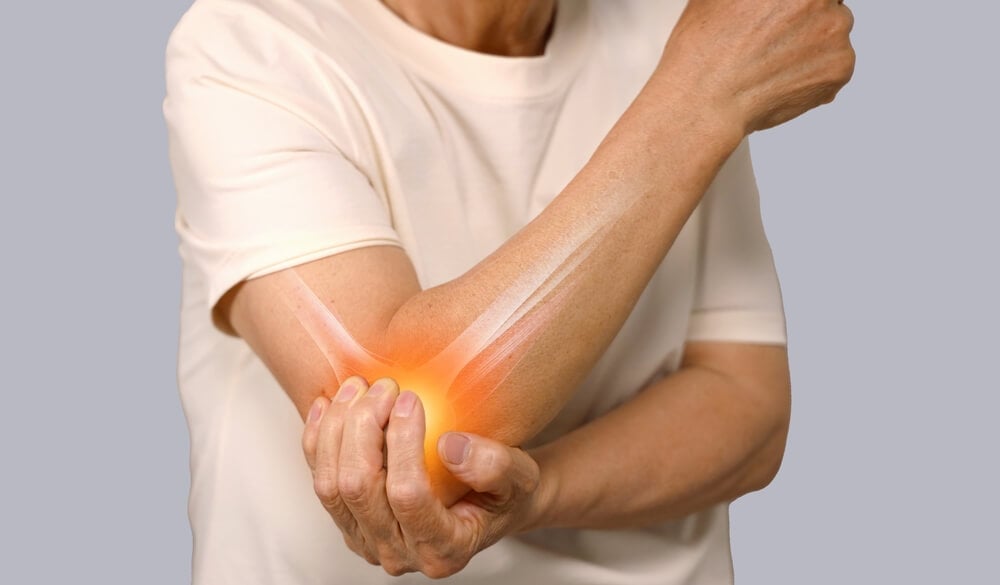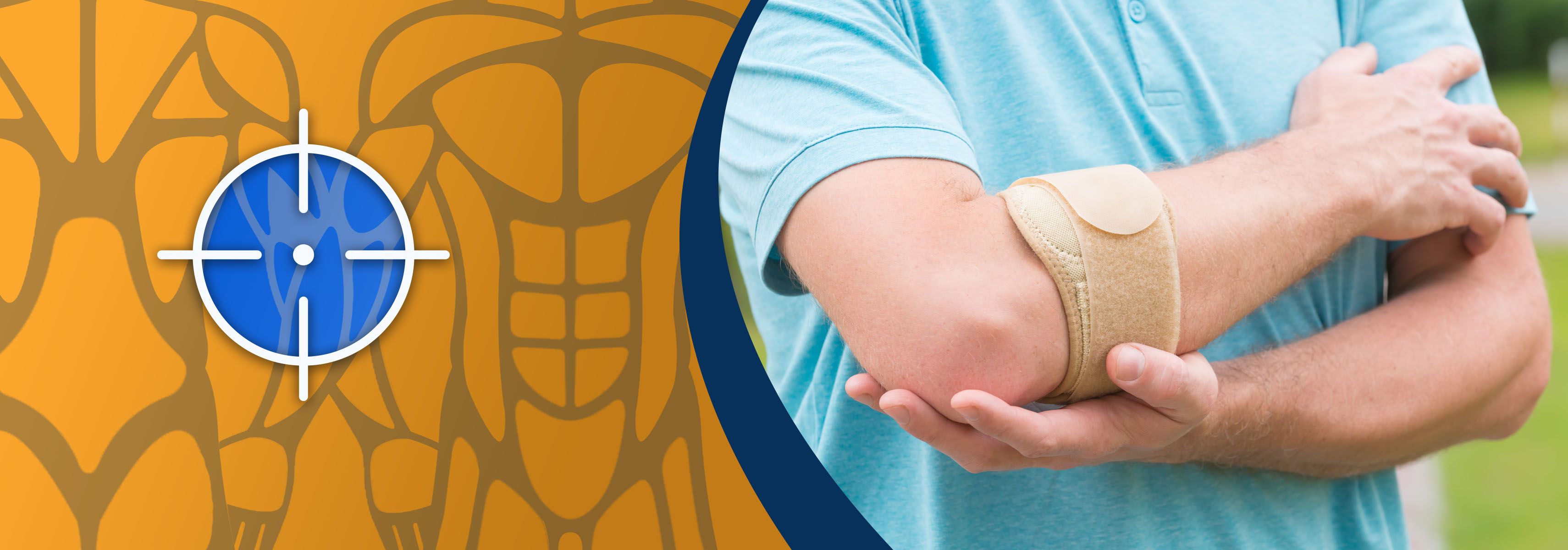The best brace for tennis elbow (lateral epicondylitis) provides exactly the right support at the right time. You can find the best brace by looking at your own symptoms and your situation. Look at the braces and see which symptoms they are designed for. That way, you will find the right brace. Whether you work at a desk, do a lot of sport or care for clients as a healthcare professional. We have a brace for every situation. Want to know which brace suits your situation? Then read on and discover how to make an informed choice.
The blog in brief:
- A good brace prevents you from unconsciously continuing to strain the painful area
- The right model provides support without restricting your freedom of movement
- Different activities require different types of braces
What symptoms can you experience with tennis elbow?
Tennis elbow often occurs when lifting, typing or squeezing. Many people initially think it is muscle pain or a bruise, which unintentionally exacerbates the symptoms. By recognising the symptoms, you can intervene more quickly and prevent the condition from worsening. Symptoms you may experience include:
- You feel a stabbing or nagging pain on the outside of your elbow
- The pain sometimes radiates to your forearm, wrist or hand
- You have difficulty gripping objects such as a cup or door handle
- The symptoms worsen when lifting, squeezing or using a mouse frequently
- The pain may subside at rest, but returns immediately with repeated movement

Which brace is most suitable for your complaint?
There are braces with a pressure pad that provides support at the right point. Other models have a wider band that stabilises the entire forearm. For athletes, a sturdy, sweat-resistant version is useful. Do you work a lot with a mouse or keyboard? Then you want comfort and flexibility above all else. In that case, a less robust brace is ideal.
What are the benefits of a brace for tennis elbow?
A brace for tennis elbow is an effective aid that you can use in your daily life. By providing support at the point of pain, it limits strain and stimulates recovery. Many people find that a brace allows them to work or train for longer without additional complaints. The benefits of a brace are:
- The pressure on the tendon is reduced, which reduces pain
- You prevent unconscious strain during work or sport
- The brace helps you to be more aware of movement and rest
- You maintain functionality while you work on recovery
How do you choose the right brace for your symptoms?
Choosing the right brace starts with a thorough analysis of your symptoms and daily activities. A brace that is too tight or too loose will not help and may actually cause frustration. That is why it is important to consider the fit, material and when you will be using it. Keep the following points in mind when making your next purchase.
- Choose a brace that is adjustable so that you can adjust the pressure
- Look for breathable materials if you wear the brace for long periods of time
- Go for extra reinforcement if you play sports or do physical work
- For office work, a light and comfortable brace is usually the most comfortable
What do our specialists say about braces for tennis elbow?
Our physiotherapists recommend braces for clients with tennis elbow, especially in the acute phase. A brace can provide relief and helps to better regulate exercises. For long-term effect, combining a brace with exercise therapy is most effective.
Braces are particularly useful in the first 6 to 8 weeks of recovery. After that, you gradually reduce their use. Specialists advise only wearing the brace when under strain, so that your muscles remain active during rest periods. This prevents stiffness and long-term complaints.
When is the best time to use the brace?
It is best to use a brace during moments of strain: work, sports or heavy household chores. By only wearing the brace at these times, you prevent your muscles from weakening. Do you have a lot of complaints when resting? Then it is a good idea to take a critical look at your posture and daily activities.
The brace helps to prevent pain before it increases. So don't wait until the symptoms are severe to start using it. Preventive use is also recommended if you know you are prone to overexertion, for example in the case of a recurring injury.
Which brace is right for you?
At Podobrace, you will find a wide range of braces suitable for tennis elbow in all stages. From light support models for use at work to sturdy sports braces with targeted pressure points. Many models have been developed in collaboration with physiotherapists and tested for comfort and effectiveness.
Examples include the Gladiator Sports elbow brace and the Dunimed tennis elbow brace. These models are known for their comfortable fit, adjustable pressure and breathable materials. Not sure which model is right for your situation? Our team of specialists will be happy to help you personally.
What is the best thing you can do yourself for tennis elbow?
Haven't had time to buy a brace yet? Then there are a number of things you can do to relieve the pain and support recovery. Small adjustments to your habits often result in less pain and fewer relapses. For example, you can:
- Avoid repetitive or heavy movements
- Ensure you have a good working posture and adjust your ergonomics
- Cool your elbow regularly, especially after exertion
- Perform light exercises to keep your muscles supple
Purchase your brace now to reduce symptoms
The best elbow brace for tennis elbow provides support where you need it most. Wearing a suitable brace gives your tendons a rest, prevents strain and allows you to continue moving without pain. When choosing a brace, consider the type of activities you do, the material of the brace and the level of support you need. At Podobrace, we have several braces that can help relieve your tennis elbow symptoms.
Do you need help choosing a brace or do you have other questions? Feel free to contact our medical specialists. They will help you with personalised advice and ensure that you get the right support.




